|
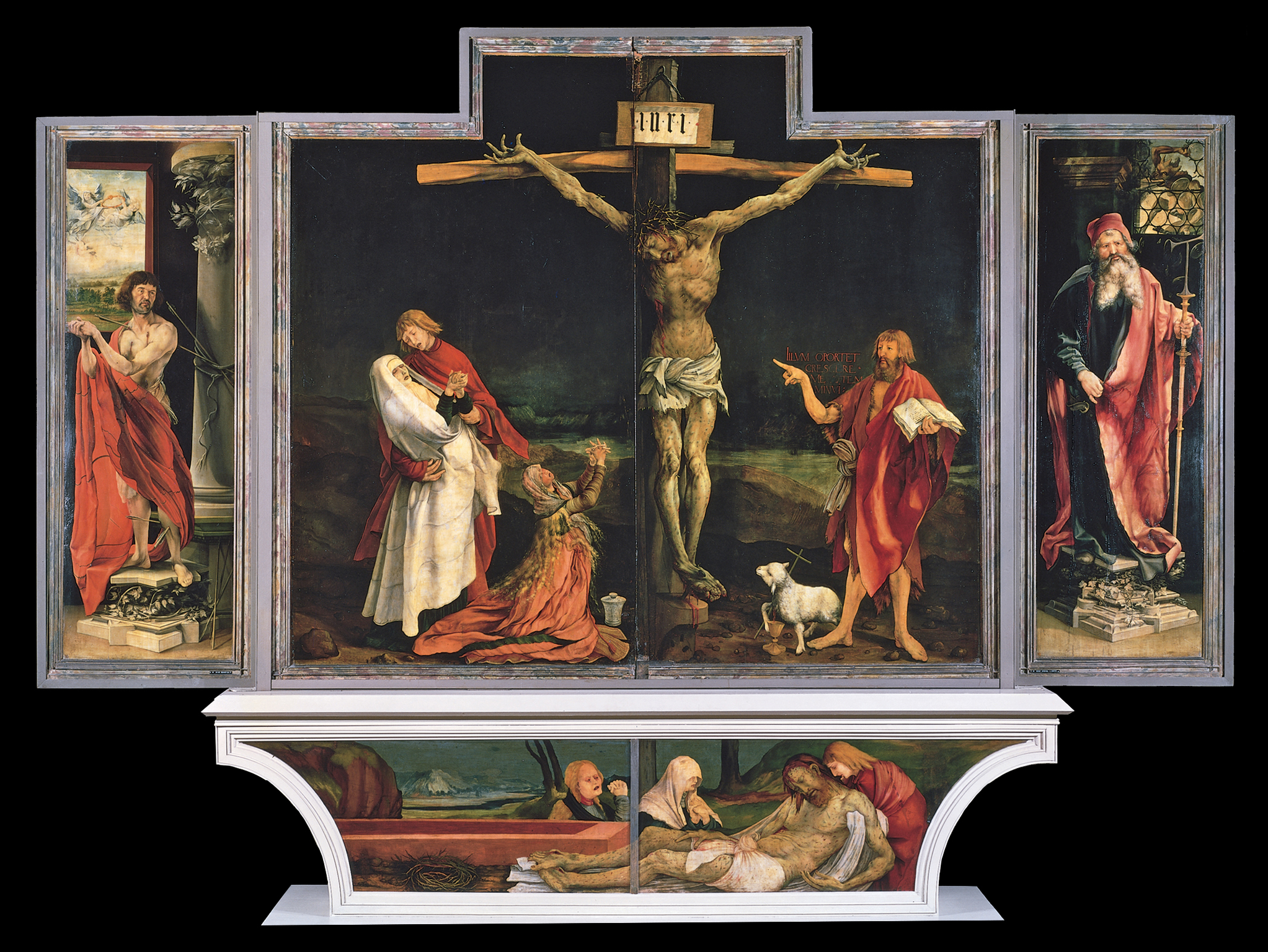
CHLOE PIENE
"I want to talk about the first work of art that made a big impression on me – one that lasts to this day. I went with my parents to see The Isenheim Altar
and it was the first time in my life that I was struck so severely by a work of art that I felt I had to somehow take it with me – I want to take it with me
– home – from Colmar – this is by Matthias Grunewald 1510-1515."
(Chloe Piene, Live, Sammlung Hoffmann Koenige, 2018)
PLATO
"Bande means both blindfolded and sexually erect or hard."
(Plato, Symposium, 380 BC)
CHLOE PIENE
"Going forward I studied Art History while totally resisting the idea of becoming an artist – my parents were artists, so no way was I going
to do that.This was true when I was a teenager, even though I was drawing all the time, since I was a kid, since I was a very young child,
but I would not acknowledge the idea, the official title, of Being An Artist. I wanted nothing to do with my parents. I drew for
myself. I drew myself. I drew costumes, figures, tricked out historical outfits, bodies adorned, always female, transformed, and
singular, like myself. So in University it was sort of pure pleasure to pursue Art History – where my love just grew – I love and am
in love with everything I looked at then and look at now – I show you this image (Isenheim Altar in its entirety with people) just to
give you a sense of the size of it, of how gigantic and cinematic, puts Hollywood to shame really – it once opened up like a monstrous
book but it has since been taken apart."
(Chloe Piene, Live, Sammlung Hoffmann Koenige, 2018)
JACQUES DERRIDA
"No more than any drawing, the movement of the right hand is not content with simply pointing out, describing, or stating the truth of what is.
It neither represents nor simply presents; it acts."
(Jacques Derrida, Memoirs of the Blind, 21)
CHLOE PIENE
"What impressed me as a seven year old was The Temptation of St. Anthony. I said, mom, can I take this home? So, we went to the gift shop
and we bought a post card of this particular panel – and I have it in my studio to this day. There are certain things about it that struck me."
(Chloe Piene, Live, Sammlung Hoffmann Koenige, 2018)
JACQUES DERRIDA
"What else does Socrates say-Socrates, whom Nietzsche will have nicknamed the 'Cyclops eye'? [The Birth of Tragedy, section 14.]
In the Phaedo, he cau¬tiously proposes, then pretends to take back, an analogy (a trope, a tropos, a rhetorical turn) in order to explain this
kind of conversion that turns one away from direct intuition or even turns the gaze toward the invisible: just as the fear of blindness
might lead one to look at a dazzling star in an indirect way (for example, by turning to its reflection in water), so it is necessary
to take refuge in the 'logot' in order not simply to see (crK01reiv) the 'truth of the things that are'(Twv ovTwv TYJV a.AiJ0ewv),
but in order to see this truth in the invisibleforms that the logoi in fact are (ideas, words, discourses, reasons, calculations)
: ... since I had given up investigating the things that are (nx ovTa crK01rwv), I decided that I must be careful not to suffer
the misfortune that happens to people who look at the sun and watch it during an eclipse. For some of them ruin their eyes unless they
look at its image in water or something of the sort. I thought of that danger, and I was afraid my soul would be blinded if I looked at
things with my eyes and tried to grasp them with any of my senses. So I thought I must have recourse to logoi (ei; Tov; Aoyov;) and
examine in them the truth of the things that are. Now perhaps my metaphor (tropos) is not quite accurate ..."
(Jacques Derrida, Memoirs of the Blind, 1993)

CHLOE PIENE
"First was the purely fantastic explosive, imaginative creatures that harass and attack St. Anthony – the wings, the
scales, the claws, the hooves and the horns – this gorgeous display of such wild, inventive anatomy. My work is so deeply grounded
in the human body – and I acknowledged as my work is often called "forensic" – that part of what I do has a very technical
aspect to it – I hold an interest in the precision of what is there – what is there? I’m asking. I’m digging, I’m looking, for the
accurate edge – of what makes a leg. But flip that, because it is from this kind of technical intrigue that launch into the
fantastic. Our anatomy makes us what we are, but – we really don’t understand it. We just don’t. We understand this (points to foot)
we understand that (points to hand) we… have enough of a conception of it that we can navigate what’s in front of us – we try not to
get hit by a tram – much – so much of it we don’t understand at all. Our anatomy in fact opens a door – to everything that is
mysterious. The body is scary. The body is not always logical. The body is not self-explanatory – not at all. I see that in these.
There’s a sort of acknowledgement here. What also struck me in this image was the way the Saint is being harassed an bullied – the
pulling of the hair – how he has fallen from his crutch – he’s being picked and pulled and pinched by this posse of bullies – it’s a
human scene – this impressed me."
(Chloe Piene, Live, Sammlung Hoffmann Koenige, 2018)
JACQUES DERRIDA
"As soon as the name comes to haunt drawing, even the without-name of God that first opens up the space of naming,
the blind are tied in with those who see. An internal duel breaks out at the very heart of drawing."
(Jacques Derrida, Memoirs of the Blind, 67)
CHLOE PIENE
"He is being treated as humans treat other humans, it’s because of this that we recognize - empathize - how he is being treated."
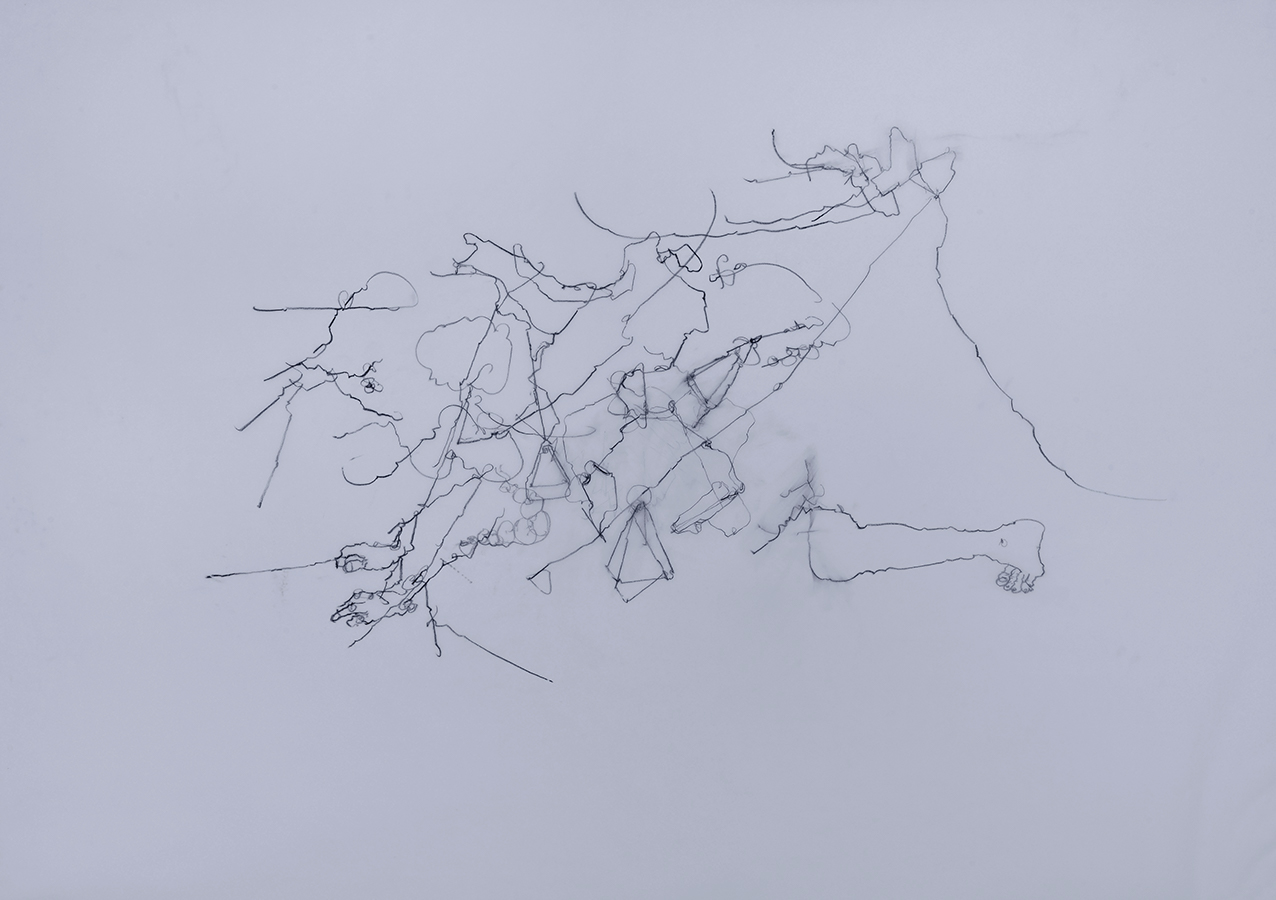
"… The name of the drawing is "Aveugle" which means blind, in French. I work often with the idea of blindness, not of the
eyes, but just the idea of not seeing – so really I am looking at what is unseen – at what we cannot see that supports that we can –
that thin outer layer that we are given access to – is not what lies underneath. What is visible is only visible of what’s been ripped
off or what’s pushed up to the surface. It’s these underneath things that fascinate me. Tombs, grave sites, the root systems of trees,
caves. Infrastructure, foundations, structured, or flowing, whatever supports and feeds, nourishes or poisons. We are skeletal – we are
skeletal sitting here now – without our skeletons none of this would be happening – your chair would be – rather useless – (laughter) –
I would not be talking. People often put a morbid spin on my work when really I’m just articulating something about the body that is
always there – I do not take the order of things – the visible – for granted."
(Chloe Piene, Live, Sammlung Hoffmann Koenige, 2018)
JACQUES DERRIDA
"This heterogeneity of the invisible to the visible can haunt the visible as its very possibility."
(Jacques Derrida, Memoirs of the Blind, 55)
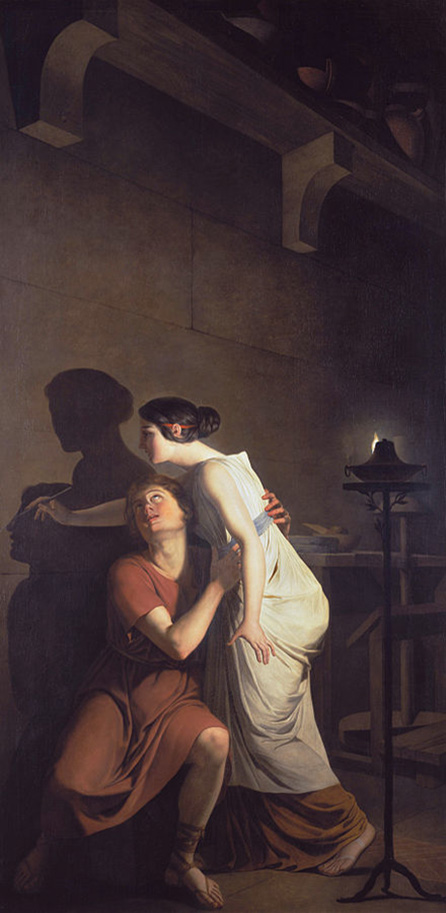
CHLOE PIENE
"Another thing people often say – 'Chloe Piene – she draws in one continuous line!'
And I look at this thing – and think – how in the world is this one continuous line? If anyone looks at this drawing
they of course will say 'No, that’s ridiculous' there’s so many things happening, lines and marks appearing, disappearing,
moving forwards, moving backwards, there’s a kind of mist, confusions, dissolution, clarity – I never have understood this claim
that I draw in one continuous line. And people say it a lot. Maybe – this idea of 'continuous line' is a kind of compliment.
The experience of the body as a whole – despite the fact that it’s constantly changing – is also a part of life – that contradicts life –
but somehow my bodies come through to them as a whole – as a true reflection of not just objective, dead weight – but of
physical – real body – experience. I take this weird, false observation as a kind of validation – my bodies are like real
bodies – without having the words to articulate it – in that sense – yes – the line may feel continuous. Because the experience of
the actual body feels continuous."
(Chloe Piene, Live, Sammlung Hoffmann Koenige, 2018)
JACQUES DERRIDA
"The experience or experimenting of drawing (and experimenting, as its name indicates, always consists in journeying beyond limits)
at once crosses and institutes these borders, it invents the Shibboleth of these passages."
(Jacques Derrida, Memoirs of the Blind, 64)
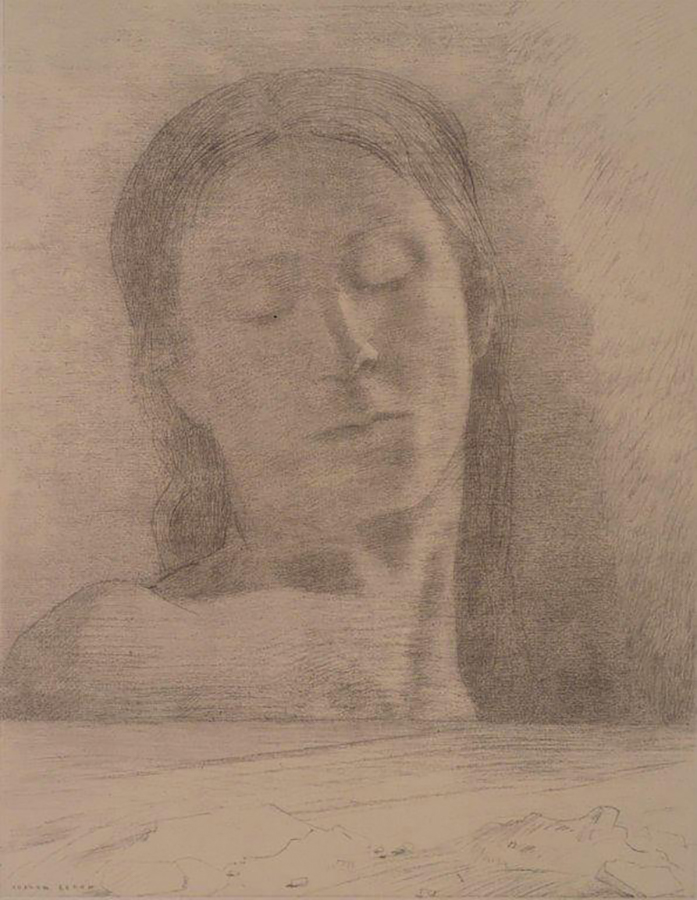
CHLOE PIENE
"Here is an image of Anne Sophie Mutter – the violinist – if you have ever seen her perform – her whole being/body falls
into the music – she gets totally emotional – she lets herself go – it’s like she becomes the instrument and the instrument
becomes her. The instrument is playing her. So, when I am drawing, the same thing happens to me. Not thinking. Just doing.
Whatever it is, it is embedded… You have done it – and then suddenly it does you. And that’s what happens when I’m drawing…
I don’t erase. I’m not working in some stiff, cerebral, anal retentive way. It’s a flow, with my whole body. My elbows, my hands,
I’m using a lot of force, I dig deep, I go light – I’m playing with possibility – it takes over – the drawing is drawing me."
(Chloe Piene, Live, Sammlung Hoffmann Koenige, 2018)
DIOTIMA and SOCRATES
"'What then is Love?' I asked; 'Is he mortal?'
'No.'
What then?'
'As in the former instance, he is neither mortal nor immortal, but in
a mean between the two.'
'What is he, Diotima?'
'He is a great spirit (daimon), and like all spirits he is intermediate between the divine
and the mortal.'
'And what,' I said, 'is his power?'"
(Plato, Symposium, 380 BC)

JACQUES DERRIDA
"For a mirror is also necessarily inscribed in the structure of self-portraits of draftsmen drawing something else. But in this case, once must
suppose in addition to the mirror, another object, one that does not look, an eyeless, abocular object, or at least … an object that, from its
standpoint, its place, takes nothing into consideration, has no views."
(Jacques Derrida, Memoirs of the Blind, 21)
"Still blind to the idea of the things themselves, whose shadows they contemplate as they are projected by the fire onto the wall in
front of them, these prisoners have been chained since childhood, "their legs and necks in bonds so that they are fixed, seeing only in
front of them, unable because of the bond to turn their heads all the way around. A conversion will free them from the phenomenal prison of
the visible world."
(Jacques Derrida, Memoirs of the Blind, 13-15)
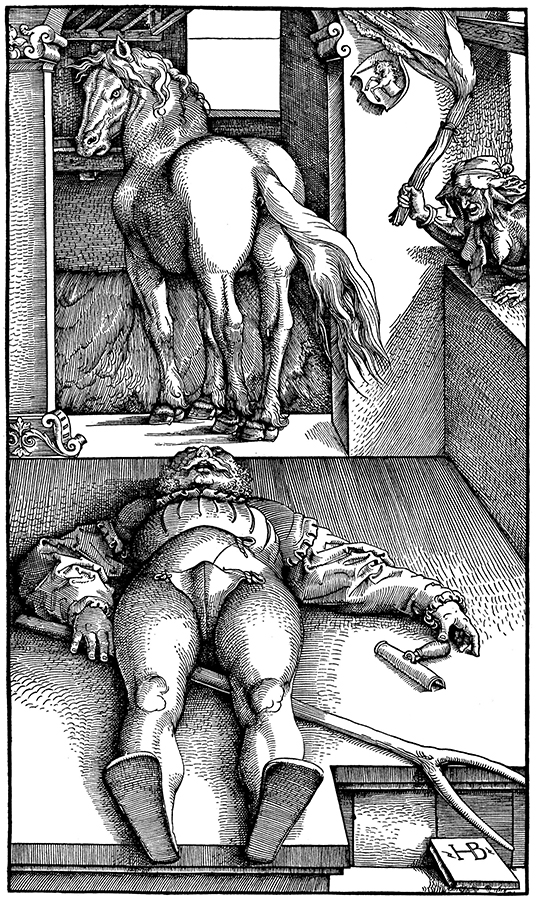
CHLOE PIENE
"So here we can see the drawing over there (gestures to Diotima) this is white charcoal on black paper. I wanted to do black drawings for a long
time, but it was a question of finding the right materials. Not always so easy to find, I don’t go with just anything; the thing that makes the
mark and the surface have to somehow marry – it has to be a match. I was initially intrigued by the white on black drawings by Hans Bellmer.
I fell in love with Bellmer a long time ago, I did a show with him, just us two together, I’ve been in shows with him, we have formed something
of a relationship, or maybe it’s just – something that was always there."
(Chloe Piene, Live, Sammlung Hoffmann Koenige, 2018)
DIOTIMA
"'He interprets' she replied, 'between gods and men, conveying and taking across to
the gods the prayers and sacrifices of men, and to men the commands
and replies of the gods; he is the mediator who spans the chasm which
divides them, and therefore in him all is bound together, and through
him the arts of the prophet and the priest, their sacrifices and mysteries
and charms, and all, prophecy and incantation, find their way. For
God mingles not with man; but through Love. all the intercourse, and
converse of god with man, whether awake or asleep, is carried on.'"
(Plato, Symposium, 380 BC)
CHLOE PIENE
"… Bellmer really made me look at the white on black. … With white on black it’s more like scratching – it’s more like – letting the light through, very different than the vellum."
(Chloe Piene, Live, Sammlung Hoffmann Koenige, 2018)
DIOTIMA
"The truth of the matter is this: No god is a philosopher. or seeker after wisdom,
for he is wise already; nor does any man who is wise seek after wisdom.
Neither do the ignorant seek after Wisdom. For herein is the evil
of ignorance,
that he who is neither good nor wise is nevertheless
satisfied with himself:
he has no desire for that of which he feels
no want."
(Plato, Symposium, 380 BC)
CHLOE PIENE
"
… So here is a drawing from that you see the body both floating and kind of rising up – I bring up the image now of Grunewald’s Christ
Ascending from the Isenheim I bring them together because they are both floating and rising. You notice that when I draw, I never draw a
horizon line. Never. Because the body is the horizon. Everything comes out of the body. Everything comes in and out – like a portal – so
things can float or shrink or swim – or do all these things at once. For me there is no ceiling, no limit – the body pushes the boundary,
or makes it – depending on the drawing. I wanted to point out a couple of things in the Grunewald image of Christ Rising. The incredible shroud.
Is it a shroud? No. It’s like psychedelic blue ocean tornado – twisting – and rising up with the body – a formidable umbilical cord – folding and evolving like the ocean."
(Chloe Piene, Live, Sammlung Hoffmann Koenige, 2018)
DIOTIMA
"But that which is always flowing in is always flowing
out, and so he is never in want and never in wealth; and, further,
he is in a mean between ignorance and knowledge."
(Plato, Symposium, 380 BC)
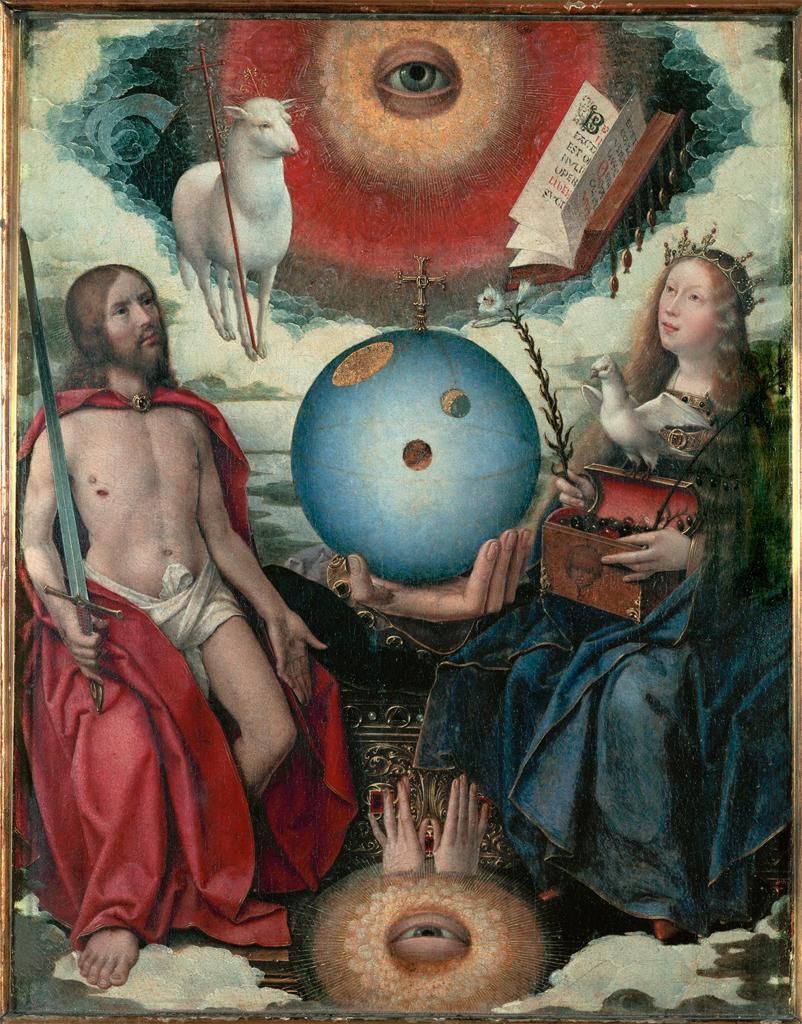
CHLOE PIENE
"Here we have another point, the soldiers are suspended. They are frozen, in time. In all other compositions of this scene – the soldiers are lying prone
on the ground. It’s like someone punched them out. Or they’re asleep. But in Grunewald, they’re mid fall – It’s as if time has stopped – and this I love.
Timelessness. We are looking at space with no time… And still, the body of Christ rises. This is an amazing exchange of states – something I play with a lot
– my bodies are free to move in whatever direction, without a horizon, so I show you –… There again we have Christ’s foot with the little pinky going up
against all the rest of the toes – the up and the down together."
(Chloe Piene, Live, Sammlung Hoffmann Koenige, 2018)
LOVITAR - Blind Daughter of Death
"Loviatar, vaimo vanha,
pahin Tuonen tyttäriä,
ilke'in manattaria,
alku kaikille pahoille,
tuhansille turmioille.
Sill' oli muoto mustanlainen,
iho inhon-karvallinen.
Tuopa musta Tuonen tyttö,
ulappalan umpisilmä,
teki tielle vuotehensa,
pahnansa pahalle maalle.
Selin tuulehen makasi,
kaltoin säähän karkeahan,
perin viimahan viluhun,
kohin päivänkoittehesen."
(Elias Lönnrot, Kalevala, 5th Rune, 1849)
TRANSLATION 1
"The blind daughter of Tuoni,
Old and wicked witch, Lowyatar
Worst of all the Death-land women
Ugliest of Mana's children
Source of all the host of evils
All the ills and plagues of Northland
Black in heart, and soul, and visage
Evil genius of Lappala
Made her couch along the wayside
On the fields of sin and sorrow
Turned her back upon the East-wind
To the source of stormy weather
To the chilling winds of morning."
(source will be cited)
TRANSLATION 2
"A girl there was of Tuonela
blind
Pit-daughter
an old woman
the worst of Tuoni's daughters
wickedest of death-daughter's
source of all ills
a thousand downfalls;
she had a swarthy face, a
skin of loathsome hue.
Well, that black girl of Tuoni,
the sightless one of the depths,
made her bed upon a road
her litter on evil land
lay with her back to the wind
her side to the rough weather
her rear to the chilly blast.
(source will be cited)
TRANSLATION 3
"The girl of death's domain was blind, Lovitar, an old woman
Death's worst daughter, the wickedest daughter of the Abode of the Dead,
source of all evils, of thousands of disasters
She had a very dark coloring, a vile colored skin
That dark girl of Death, the half-blind one of Waste-Land
Made her bed on a pathway, laid her pallet on bad ground
She lay down back to the wind, aslant to the severe wind,
Back to the blasting cold, facing the dawn."
(source will be cited)

Citations.
Chloe Piene, Live, Sammlung Hoffmann Koenige, 7, December 2018, "Doubt"
Plato, Seth Benardete, and Allan Bloom. Plato's Symposium. Chicago: University of Chicago Press, 2001. Print.
Derrida, Jacques. Memoirs of the Blind: The Self-Portrait and Other Ruins. Chicago: University of Chicago Press, 1993. Print.
Lönnrot, Elias. Kalevala. 28th ed., Finnish Literature Society, 1849.
|